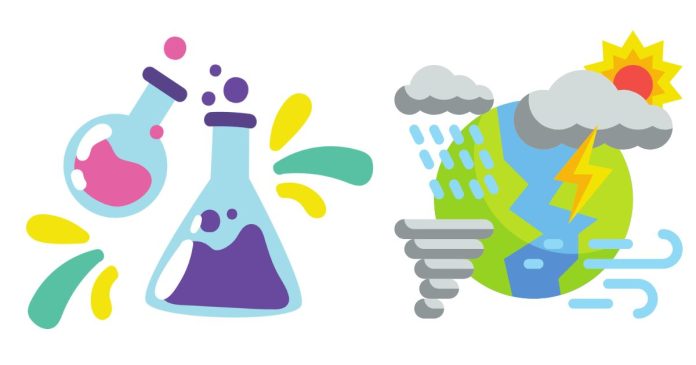Weathering is a natural process that breaks down rocks and minerals on Earth’s surface, shaping landscapes over time. There are two primary types of weathering: chemical weathering and physical weathering. While both processes contribute to the breakdown of rocks, they operate in distinct ways. Let’s explore what sets them apart.
1. Chemical Weathering: A Transformation of Composition
Chemical weathering involves the chemical alteration of a rock’s minerals. This type of weathering changes the chemical structure of the material, often transforming it into something entirely different. It occurs due to reactions with water, air, or other chemicals in the environment. Common processes involved in chemical weathering include:
- Oxidation: When oxygen reacts with minerals, forming oxides (e.g., rust forming on iron-rich rocks).
- Hydration: Water chemically combines with minerals, causing expansion and weakening.
- Carbonation: Carbon dioxide in the atmosphere reacts with water to form carbonic acid, which dissolves rock materials like limestone.
- Hydrolysis: Water breaks down minerals, especially silicates, into clay and dissolved ions.
For example, feldspar in granite can chemically weather into clay minerals due to prolonged exposure to water.
2. Physical Weathering: A Mechanical Breakdown
Physical weathering, also known as mechanical weathering, involves the physical breakdown of rocks into smaller pieces without altering their chemical composition. It’s driven by environmental forces like temperature changes, pressure, and biological activity. Common types of physical weathering include:
- Frost Wedging: Water seeps into cracks, freezes, and expands, causing the rock to break apart.
- Thermal Expansion: Repeated heating and cooling can cause rocks to crack due to expansion and contraction.
- Abrasion: Rocks and particles grind against each other, wearing down surfaces.
- Root Wedging: Plant roots grow into cracks, exerting pressure and causing the rock to fracture.
An example of physical weathering is the cracking of rocks in desert environments due to extreme temperature fluctuations between day and night.
Key Differences Between Chemical and Physical Weathering
| Aspect | Chemical Weathering | Physical Weathering |
|---|---|---|
| Process | Alters the chemical composition of rocks | Breaks rocks into smaller pieces without altering composition |
| Agents | Water, air, acids, and chemicals | Temperature changes, pressure, biological activity |
| Appearance of Result | New minerals or dissolved substances are formed | Rock fragments are smaller but chemically unchanged |
| Example | Limestone dissolving due to acid rain | Rocks cracking from freezing and thawing cycles |
3. How They Work Together
Chemical and physical weathering often occur simultaneously. For instance, physical weathering can create more surface area on a rock, allowing chemical weathering to act more effectively. Together, these processes shape Earth’s surface and contribute to soil formation, landscape changes, and the rock cycle.
Understanding the distinction between chemical and physical weathering helps us appreciate the dynamic forces that shape our planet. While one changes the internal chemistry of rocks, the other focuses on breaking them apart physically. Together, they are powerful forces of nature that constantly remodel Earth’s surface.


